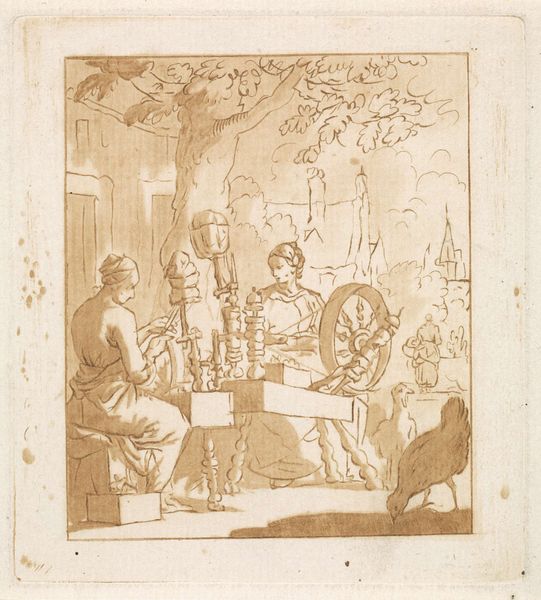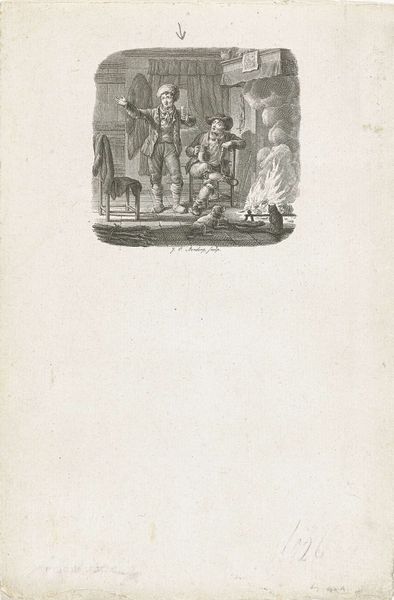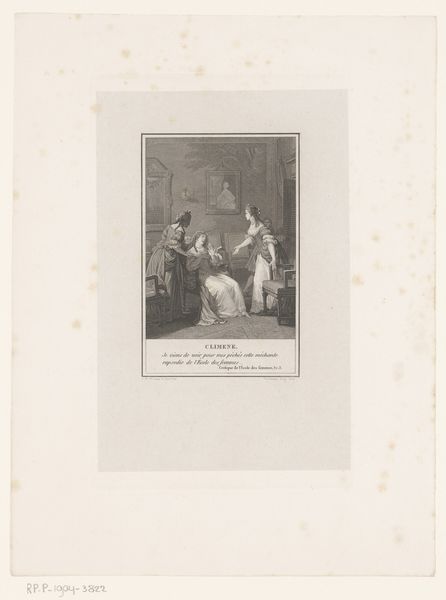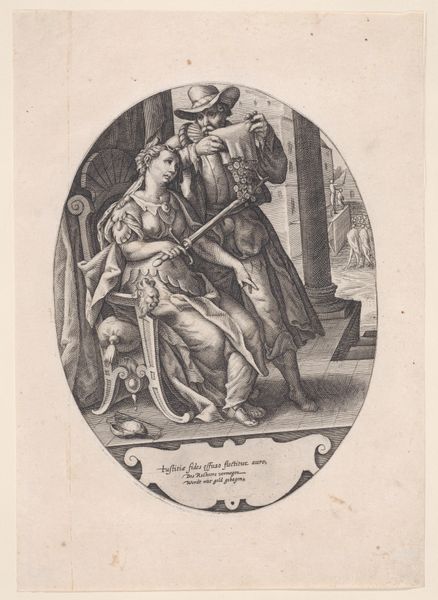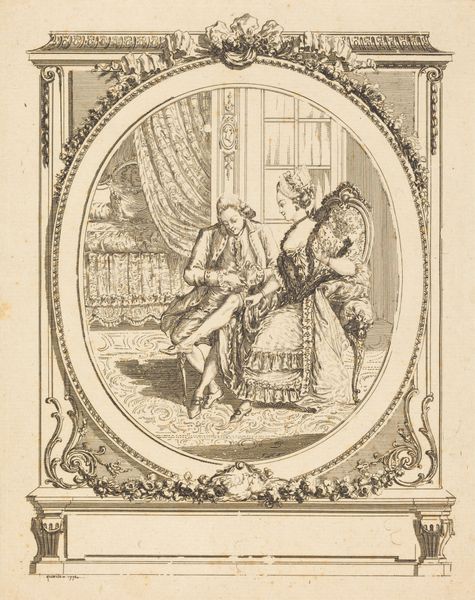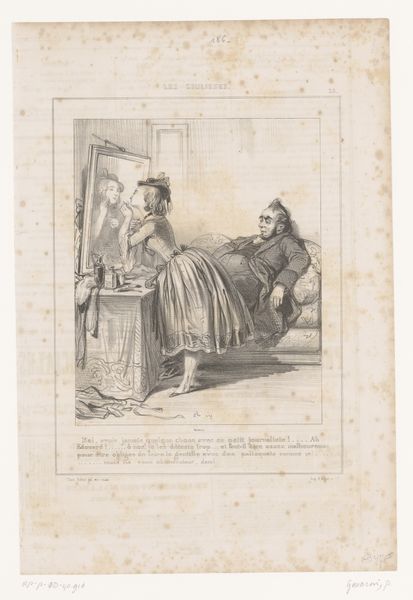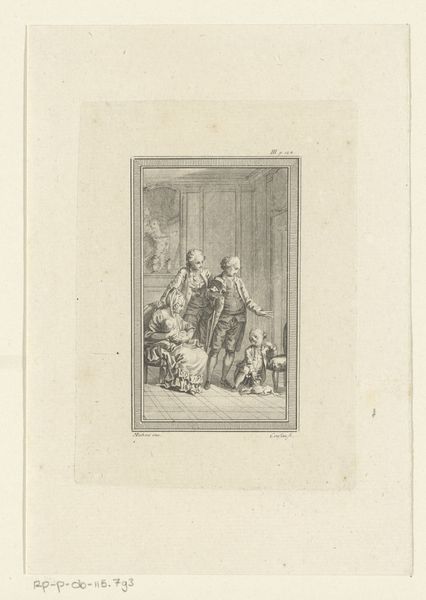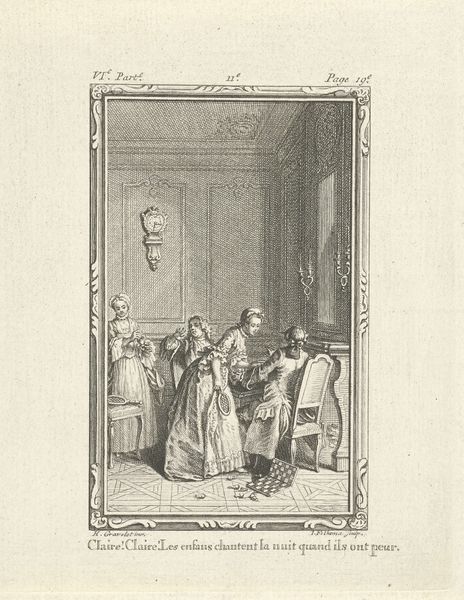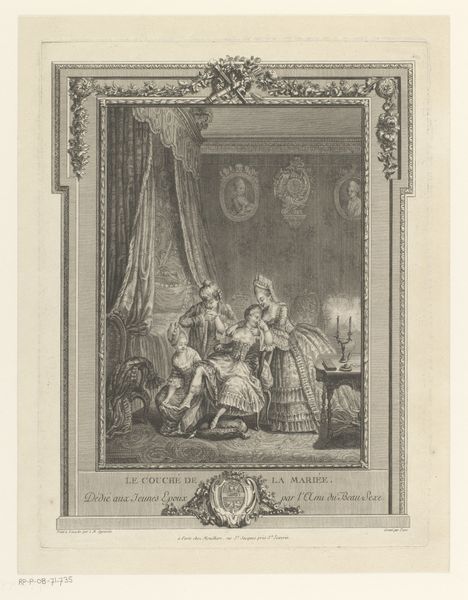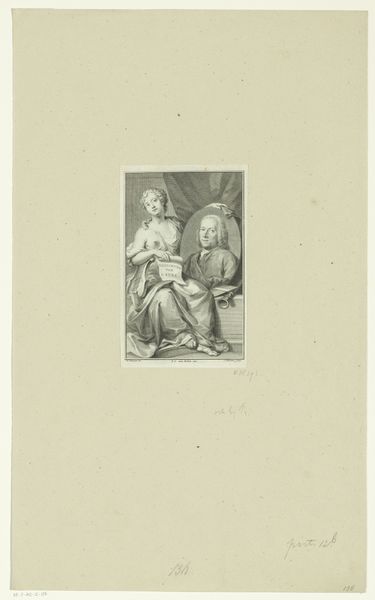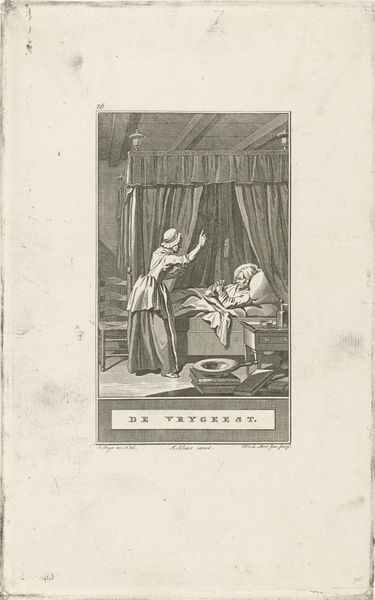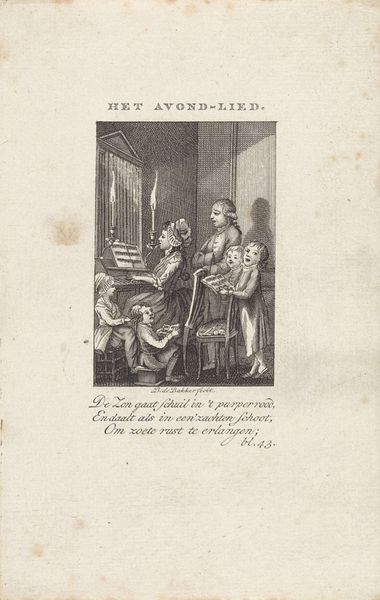
graphic-art, print, etching
#
portrait
#
graphic-art
# print
#
etching
#
symbolism
Dimensions: height 162 mm, width 116 mm
Copyright: Rijks Museum: Open Domain
Curator: Here we have "Ex libris van Sándor Turóczi," a print, specifically an etching, created sometime between 1895 and 1936 by Kornél Révész. My initial feeling is one of faded grandeur. Editor: There's a rather wistful atmosphere, wouldn't you say? It's remarkable how much emotional depth Révész manages to coax from this printmaking process. The figures almost seem to float in the light. Curator: Yes, and consider how etching—scratching lines into a metal plate—allows for the kind of delicate shading and detail necessary to capture not just forms, but textures. You can practically feel the weave of the fabric. Moreover, "ex libris" indicates this was created to be a bookplate, an element within a larger system of book production, ownership, and dissemination. We are invited to reflect on who commissioned this, how the circulation of books in the given milieu created taste, how knowledge might equate with power in that historical framework. Editor: Absolutely. And thinking about symbolism, notice how the individuals seem to be examining artifacts or artworks. Is this a reflection on collecting, on the cultural value ascribed to objects and books in particular? Curator: Quite possibly. Etchings could be made in relatively high numbers. It shows, perhaps, the rise of an increasingly materially aware literate public, and the possibilities and aspirations of artistic labor, not purely within traditional models of patronage. Editor: The choice of archaic garb and symbols further emphasizes an idealized, romantic past. Are we meant to feel a connection to that imagined era of collecting and learning, even as it remains just beyond reach? It feels less like a celebration of that specific past, and more a reflection on the universal impulse to collect, to understand. Curator: Precisely! The medium, etching, speaks of reproduction and consumption. Consider the skill and labor required to produce not one unique image but multiples—to render ownership not simply about possessing the physical object of the book, but asserting a wider cultural aspiration. Editor: This certainly lends weight to the understanding of how artistic techniques enable access and interpretability. Curator: Indeed. Seeing it this way expands how we understand the social life of objects in a transforming cultural and economic landscape. Editor: A thought-provoking journey into material production, social consumption, and memory contained within this etching!
Comments
No comments
Be the first to comment and join the conversation on the ultimate creative platform.
